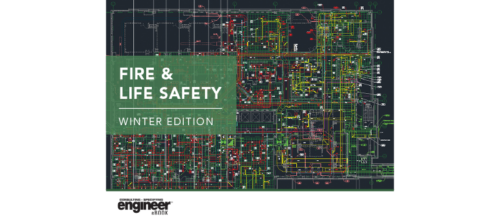Driving data center design: Fire and life safety
In the information age, data centers can be the beating heart of not just a building, but an entire global corporation. Fire suppression systems must be carefully considered by fire protection engineers.
Respondents
- Andrew Baxter, PE, Principal/MEP Engineering Director, Page, Austin, Texas
- Brandon Kingsley, PE, CxA, CEM Project Manager, Primary Integration Solutions Inc., Charlotte, N.C.
- Keith Lane, PE, RCDD, NTS, RTPM, LC, LEED AP BD+C, President/Chief Engineer, Lane Coburn & Associates LLC, Seattle
- Dwayne Miller, PE, RCDD, CEO, JBA Consulting Engineers, Hong Kong
CSE: What unique fire suppression or life safety systems have you specified or designed in a data center? Discuss clean agent systems, etc.
Kingsley: Actually, we are noticing a trend back to traditional wet and pre-action systems and fewer clean agent systems. For example, certain government agencies require wet systems because they have had trouble maintaining pre-action systems. Other owners require double-interlock pre-action systems because they do not want water sitting above the data center but do not want to incur the cost of a clean agent system. They may have found that they can bring their servers back up after they dry out without a lot of failures, or they are willing to replace those that have failed, especially if they represent a small fraction of the total. Early warning smoke detection systems are becoming the norm.
Baxter: We are using more double interlocked pre-action systems for the fire protection of the critical systems and areas. We are also using dry nitrogen systems as the purge and pressure maintenance system for these dry sprinkler systems, thus eliminating the need for galvanized pipe and reducing the potential for internal pipe corrosion. The use of clean agent systems is declining significantly, and we are now seeing them used only in very specific "critical asset protection" type installations such as tape or document storage areas. Because most jurisdictions don’t recognize the clean agent system for life safety purposes, the sprinkler systems are still required and thus the clean agent becomes somewhat redundant and is a cost many owners no longer want to have.
CSE: How have the costs and complexity of fire protection systems changed in recent years?
Baxter: If anything, we are seeing the cost and complexity of the fire protection systems decreasing over the last few projects. By minimizing the use of the clean agent systems and using black steel pipe with the active nitrogen corrosion protection systems, the overall cost of these systems has gone down.
Kingsley: I think we are seeing more traditional systems and fewer clean agent systems due to their higher costs and more complex construction requirements.
Do you have experience and expertise with the topics mentioned in this content? You should consider contributing to our CFE Media editorial team and getting the recognition you and your company deserve. Click here to start this process.





